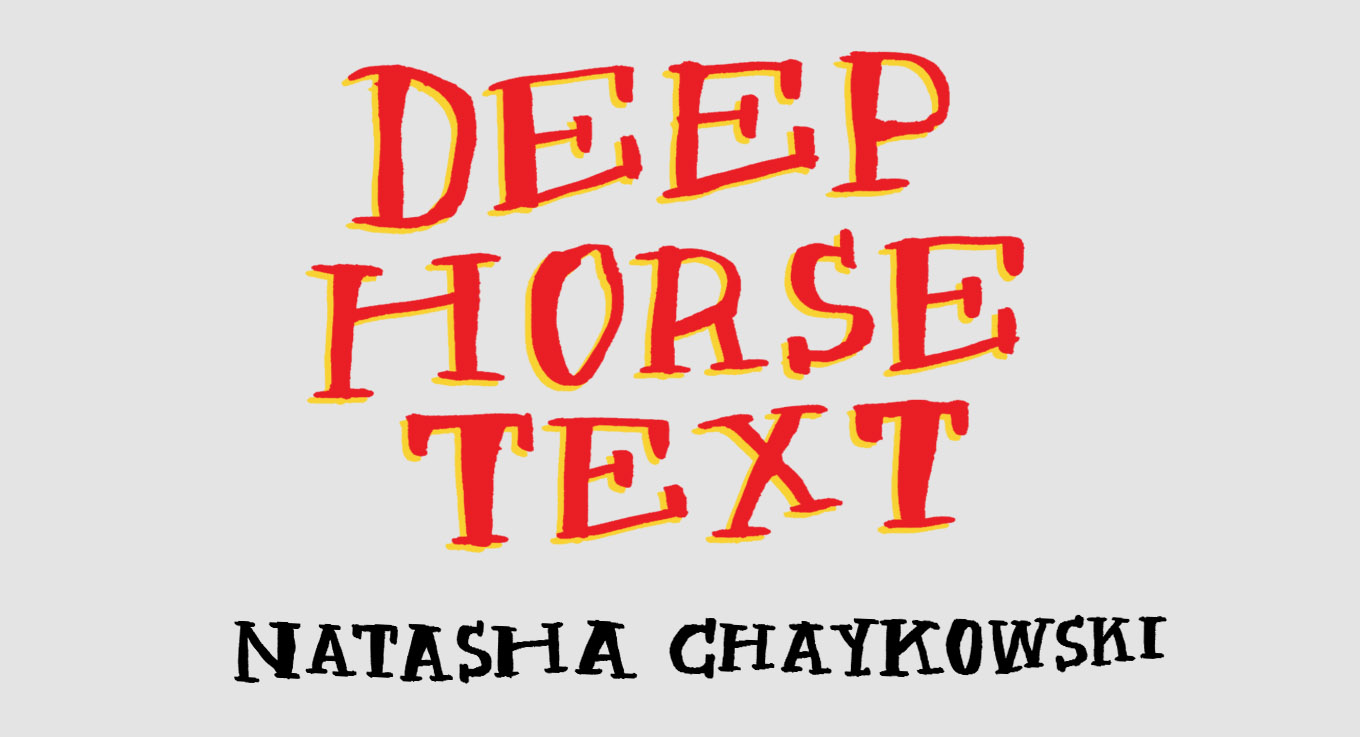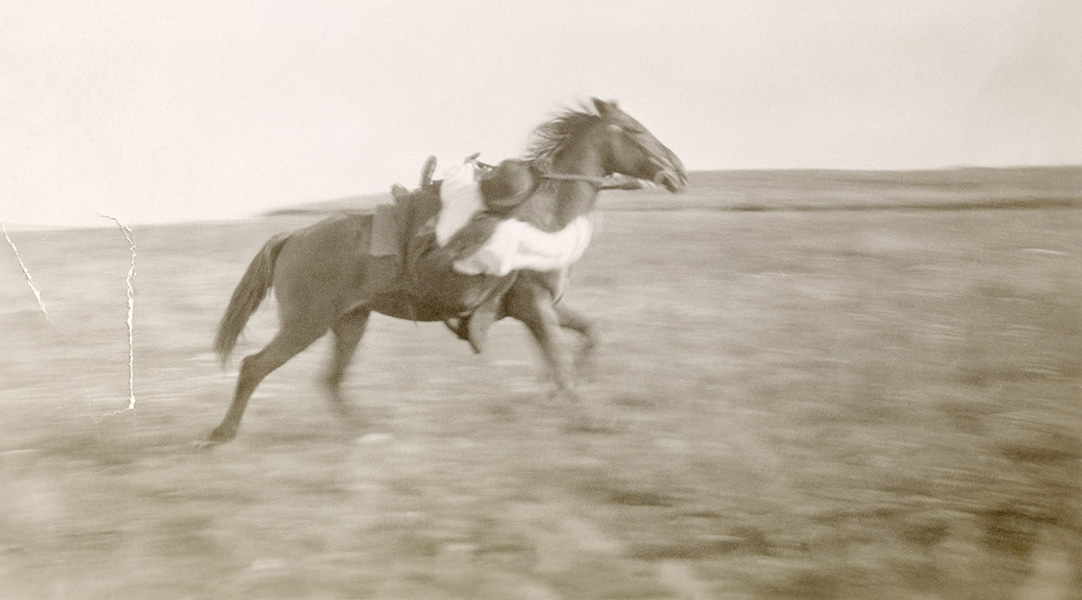



I found myself blinking against bright Rocky light one day, sitting by the river, forearms burnt somehow in October. “Is the sun hotter here?” Yes, it is—in Alberta, we’re closer to the sky. Feet on the ground, I had arrived on Treaty 7 as though summoned by a bell whose toll I had no choice but to submit to. And I stayed for many years, chasing love with an invisible rope, swinging wildly, then chasing something more particulate—now waiting for, not chasing, secrets that hide in plain sight. I followed the river from its wellspring in the mountain cords. Cord, chord, chorda—spines, harmonies, and mountains. Another name for mountain ranges is cordillera, and another name for range is ranch. So, I followed the river through the foothills and out onto the Prairie, where I stayed for a while and enlisted some accomplices to help me find out about these secrets whose subtle fluttering, like cosmic static, I could sometimes perceive from the corner of my eye.
“The impetus behind this project is to infiltrate the spaces that people here are interested in, like the Stampede, which is really the epitome of this. So much of Calgary's metaphorical and physical architecture and layout (and politics and policy) revolve around this ten-day festival—it's remarkable,” I wrote to Hazel Meyer. Her mesmeric drawings, attraction to archival morasses, penchant for sniffing out that which is untold, queer, and kinky in sport, and her longstanding, unashamed affection for diarrhea and other abject things hinted to me that she might be interested in my proposition to come to Calgary and be the inaugural (and unofficial) Stampede Artist-in-Residence through The Bows. Hazel is always trying to strike up a conversation with secrets hiding in plain sight, which means “to be unnoticeable, by staying visible in a setting that masks presence.” But at the rodeo, I came to realize later, we—Hazel and I, the interlopers—were the ones hiding in plain sight. We were the secrets. Us, and the horses.
DEEP HORSE TEXTS looks to the archived past to develop a narrative of horse welcoming, belonging, and care that can be understood adjacent to the Calgary Stampede and all its complexities. While we walked around the stables, ate mini-donuts, sat on scorched bleachers, cooed at piglets, and walked on hay-drenched thoroughfares, we wondered what we were looking for. In the murky light of the Stampede stables, dust floating cinematically in moats, smell of animal poo borne throughout, we saw handlers brushing their horses, braiding manes, cleaning horseshoes, poulticing legs, and all at once it became clear to us that horses don’t just serve humans. We also serve them in return. Hazel decided that these quiet moments would constitute her project—so much tenderness, in plain sight, amid the other fanfare and machismo of the rodeo. “I wonder if horses know they can never, truly, be owned,” she said.
This was in 2018, and as you know, a lot has happened since then. Shifting, pandemic-spurred public health measures thwarted our first plan to host an interpretive equine performance, then jammed our plans for a horse-based residency. Instead, Hazel decided to invite other artists and writers to help her think through this project and research—I, it seems, am not the only one here drawn to enlisting accomplices. What has resulted is a sprawling, many-perspective celebration of horses, of the equine: farmer’s almanacs and moon cycles, monuments, leather, pony-play, the history of Black ranching, folk tales, Indian farmer horseback protests, horses in RPGs, therians and horse-obsessed teens, a game called H.O.R.S.E., pancake breakfasts and pumpjacks, many-millennia old Blackfoot stories of pre-colonial horses passed down across generations, salt licks, big eyes, braids, and bridles.
I hadn’t been on a horse in 25 years when I drove through the electric yellow canola fields of southern Alberta with a best friend, and hopped on the sturdy bare back of a good old boy named Ringo, at the behest of Roxy, our shining-eyed equine guide for the day. In the time that had elapsed between my childhood horseback riding lessons and that day, all the cells in my body had died and been replaced twice over, however, my body remembered everything necessary for riding, as though I had been astride all these years. My spine remembered how to stack its notches, my legs the gentle squeeze, my arms the right angles, my eyes the direction ahead, and my heart the cadence of calm and ideal love.
Maybe a deep horse text is really just a longing to transcend the confines of our skin, for communion with equine eyes and many tens of thousands of years of growing together, collaborating: us and horses. Maybe this is the secret I’ve been looking for. Maybe this is why we ride, why we have dogs, why we paint, why we read, why we write, why we make music, why we love: to rejoin the woven world of everything, wherein “a horse, a woman, and a stone are not different things.” Because being a human is lonely, and because riding, and having a dog, and painting, and reading, and writing, and making music, and loving, or any other thing, lets us be reminded of our constituency, recognized as part of everything. Part of the grass, part of the sky. Have you seen the quilted Prairie from above? Or the hoof-trodden rolling green fields of dew in the unwary morning light? Maybe a deep horse text is simply to have legs tight around the barreling ribs of another, body snug to warm withers, or even feet plain on the ground, one hand on the synchronized and familiar pulse of another creature, and face turned to the sky, which in Alberta, is closer to us than anywhere else.
Natasha Chaykowski is a writer and curator based on Treaty 7 Territory in Lethbridge, Alberta.


I found myself blinking against bright Rocky light one day, sitting by the river, forearms burnt somehow in October. “Is the sun hotter here?” Yes, it is—in Alberta, we’re closer to the sky. Feet on the ground, I had arrived on Treaty 7 as though summoned by a bell whose toll I had no choice but to submit to. And I stayed for many years, chasing love with an invisible rope, swinging wildly, then chasing something more particulate—now waiting for, not chasing, secrets that hide in plain sight. I followed the river from its wellspring in the mountain cords. Cord, chord, chorda—spines, harmonies, and mountains. Another name for mountain ranges is cordillera, and another name for range is ranch. So, I followed the river through the foothills and out onto the Prairie, where I stayed for a while and enlisted some accomplices to help me find out about these secrets whose subtle fluttering, like cosmic static, I could sometimes perceive from the corner of my eye.
“The impetus behind this project is to infiltrate the spaces that people here are interested in, like the Stampede, which is really the epitome of this. So much of Calgary's metaphorical and physical architecture and layout (and politics and policy) revolve around this ten-day festival—it's remarkable,” I wrote to Hazel Meyer. Her mesmeric drawings, attraction to archival morasses, penchant for sniffing out that which is untold, queer, and kinky in sport, and her longstanding, unashamed affection for diarrhea and other abject things hinted to me that she might be interested in my proposition to come to Calgary and be the inaugural (and unofficial) Stampede Artist-in-Residence through The Bows. Hazel is always trying to strike up a conversation with secrets hiding in plain sight, which means “to be unnoticeable, by staying visible in a setting that
masks presence.” But at the rodeo, I came to realize later, we—Hazel and I, the interlopers—were the ones hiding in plain sight. We were the secrets. Us, and the horses.
DEEP HORSE TEXTS looks to the archived past to develop a narrative of horse welcoming, belonging, and care that can be understood adjacent to the Calgary Stampede and all its complexities. While we walked around the stables, ate mini-donuts, sat on scorched bleachers, cooed at piglets, and walked on hay-drenched thoroughfares, we wondered what we were looking for. In the murky light of the Stampede stables, dust floating cinematically in moats, smell of animal poo borne throughout, we saw handlers brushing their horses, braiding manes, cleaning horseshoes, poulticing legs, and all at once it became clear to us that horses don’t just serve humans. We also serve them in return. Hazel decided that these quiet moments would constitute her project—so much tenderness, in plain sight, amid the other fanfare and machismo of the rodeo. “I wonder if horses know they can never, truly, be owned,” she said.
This was in 2018, and as you know, a lot has happened since then. Shifting, pandemic-spurred public health measures thwarted our first plan to host an interpretive equine performance, then jammed our plans for a horse-based residency. Instead, Hazel decided to invite other artists and writers to help her think through this project and research—I, it seems, am not the only one here drawn to enlisting accomplices. What has resulted is a sprawling, many-perspective celebration of horses, of the equine: farmer’s almanacs and moon cycles, monuments, leather, pony-play, the
history of Black ranching, folk tales, Indian farmer horseback protests, horses in RPGs, therians and horse-obsessed teens, a game called H.O.R.S.E., pancake breakfasts and pumpjacks, many-millennia old Blackfoot stories of pre-colonial horses passed down across generations, salt licks, big eyes, braids, and bridles.
I hadn’t been on a horse in 25 years when I drove through the electric yellow canola fields of southern Alberta with a best friend, and hopped on the sturdy bare back of a good old boy named Ringo, at the behest of Roxy, our shining-eyed equine guide for the day. In the time that had elapsed between my childhood horseback riding lessons and that day, all the cells in my body had died and been replaced twice over, however, my body remembered everything necessary for riding, as though I had been astride all these years. My spine remembered how to stack its notches, my legs the gentle squeeze, my arms the right angles, my eyes the direction ahead, and my heart the cadence of calm and ideal love.
Maybe a deep horse text is really just a longing to transcend the confines of our skin, for communion with equine eyes and many tens of thousands of years of growing together, collaborating: us and horses. Maybe this is the secret I’ve been looking for. Maybe this is why we ride, why we have dogs, why we paint, why we read, why we write, why we make music, why we love: to rejoin the woven world of everything, wherein “a horse, a woman, and a stone are not different things.” Because being a human is lonely, and because riding, and having a dog, and
painting, and reading, and writing, and making music, and loving, or any other thing, lets us be reminded of our constituency, recognized as part of everything. Part of the grass, part of the sky. Have you seen the quilted Prairie from above? Or the hoof-trodden rolling green fields of dew in the unwary morning light? Maybe a deep horse text is simply to have legs tight around the barreling ribs of another, body snug to warm withers, or even feet plain on the ground, one hand on the synchronized and familiar pulse of another creature, and face turned to the sky, which in Alberta, is closer to us than anywhere else.

Natasha Chaykowski is a writer and curator based on Treaty 7 Territory in Lethbridge, Alberta.